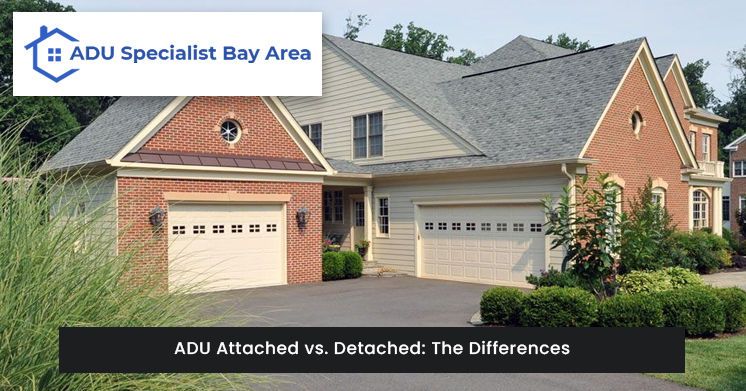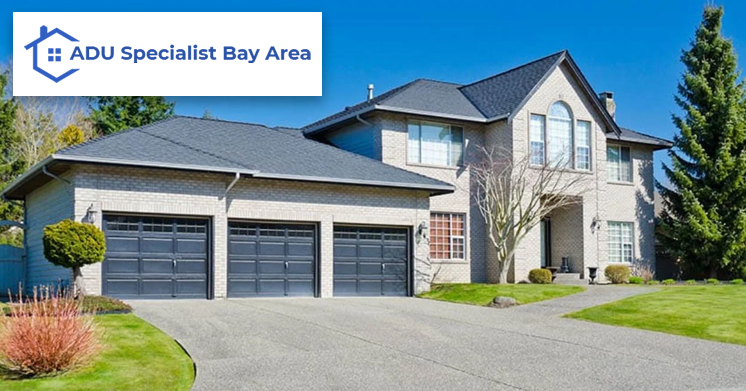- Call Free: 877-937-7970
In addition to increasing the value of your property, you may also generate a steady income by renting it out or offering a home for an elderly family member or friend. How? As a result of build an ADU on your property. If you’re looking for a way to expand your living space, an ADU is a great option.

ADUs are available in a variety of forms and sizes. The sort of ADU you create will be determined by the purpose for which it’s being built, so think carefully before deciding.
An ADU may be almost anything on your land: a distinct living space with its door, kitchen, bathroom, and bedroom. A wide variety of structures are possible because of this.
When planning the specifics of an ADU on your property, factors including available space, local zoning rules, and intended use must be taken into account. If you want to know the laws in your area, you’ll need to do some research. There are, however, two main groups of ADUs to choose from.
Attached and detached ADUs are two of the most common forms of ADUs that you may build. Garage conversions into ADUs, basement ADUs, and junior ADUs are only a few subcategories. However, there are two types of ADUs: attached and detachable.
Detached ADUs do not share a wall with the principal home, but connected ADUs do, thus making them technically part of the primary residence. There is no direct connection between a detached ADU and the principal dwelling.
One of the primary residence’s basements or attic will qualify as an attached ADU. In addition, the distance between a detached ADU and the principal dwelling (also known as the “setback”) might vary based on local regulations and available space.
Alternatively, an ADU linked to the main house might be a distinct living unit that has all of the amenities of the original residence. On the other hand, a detached ADU is a separate, smaller home constructed on the same property as the main house. The term “backyard cottage” has come to refer to a detached ADU.
We’ve developed a summary of the most significant differences between attached and detached ADUs to assist you in making an informed decision about which kind is right for you. However, bear in mind that this is not an exhaustive list of possible solutions. Depending on your local zoning restrictions, lot, and budget, you may or may not create a specific size and style ADU. Consequently, before choosing the sort of ADU you desire, you will need to study on your own.
On the other hand, there are universal distinctions between attached and disconnected ADUs. Listed below are the specifics:
| Attached ADU | Detached ADU | |
| Definition | An ADU that is physically connected to the primary dwelling, such as a basement or garage conversion. | An ADU is a separate, standalone structure on the same property as the primary dwelling. |
| Size | Typically smaller than detached ADUs due to space limitations. | Can be larger than attached ADUs, as they are standalone structures and have more flexibility in terms of size and design. |
| Privacy | May have less privacy due to shared walls or spaces with the primary dwelling. | Offers more privacy, as they are separate from the primary dwelling and may have their own entrance and outdoor space. |
| Cost | Can be less expensive to build or renovate than detached ADUs, as they may require fewer materials and labor. | Tend to be more expensive to build than attached ADUs due to the cost of constructing a separate structure. |
| Flexibility | May be more difficult to repurpose or use for other functions in the future due to their attachment to the primary dwelling. | Can be more flexible in terms of use and repurposing, as they are standalone structures that can be used for various purposes. |
Depending on the ADU being parked, ADU parking rules may vary significantly from one jurisdiction to the next. Some broad principles and current trends in parking laws for ADUs may be provided to help address the problem of parking. If you want to learn about the parking restrictions for ADUs in your location, you’ll have to perform your study.
At least one off-street parking spot is required for detached ADUs in Bay Area, California. It is possible to have an enclosed or uncovered parking place. The ADU might have it on the front, back, or even sides. If a garage is converted into an ADU in a single-family neighborhood, you don’t need to build a new parking spot for the main house.

A detached ADU does not need off-street parking if the property is historically or architecturally essential or within a half-mile of the closest public transit facility.
Depending on the location of the connected ADU (whether it is in the basement or attic of the principal dwelling), the parking requirements vary. An external connected ADU requires an off-street parking place like a detached ADU.
There is no requirement for extra parking for an internal ADU on the property. You may not rent out your ADU if you don’t have a parking spot because of Bay Area’s single-family zoning regulations.
ADUs, whether attached or detached, have varying effects on the resale value of your home. Detached ADUs tend to fetch a higher price for your home and provide more value than attached ADUs. When it comes to maximizing available space, an attached ADU is a superior option since it uses the same amount of land as a detached ADU. In addition to a backyard cottage, an attached ADU would add much value to the property but at a lower price. This is because prospective purchasers prefer an ADU that has its entrance and is not attached to the main house.
An ADU linked to the main house is typically limited to less than half of its original size. Because of this, a connected ADU can only increase the value of your home so much. In most cases, the price per square foot is used to calculate a property’s worth. Because an attached ADU may only have 50% of the total square footage of the primary residence, the property’s value can only rise by 50%.
Attached and detached ADUs have several significant distinctions. Your budget, lot size, local zoning rules, and long-term financial objectives all need to be considered while deciding on the best ADU option for your property.
Some common permits required for both attached and detached ADUs include building permits, electrical permits, plumbing permits, and mechanical permits. However, if your ADU will be detached, you may also need additional permits for structures such as a detached garage or shed.
In summary, the permit requirements for building an attached versus a detached ADU may differ depending on your location and the specific regulations in your area. It is important to check with your local building department or zoning board to determine the specific requirements for your project.
Whether you can build both an attached and detached ADU on your property will depend on the zoning regulations and building codes in your local area.
In some areas, it may be possible to build both an attached and detached ADU on a single property, while in other areas, there may be restrictions on the number or type of ADUs that can be built on a property.
Additionally, building both an attached and detached ADU on your property may require additional permits and inspections. Be sure to consult with a licensed contractor and other professionals to ensure that you comply with all applicable regulations and requirements.
Whether an attached or detached ADU is better for renting out depends on various factors such as the location, property size, rental market, and personal preference. Both attached and detached ADUs have their advantages and disadvantages when it comes to renting out.
Attached ADUs are connected to the main house and share some utilities such as water, gas, and electricity. This makes them more affordable to build and maintain. They may also be more convenient for tenants as they have easy access to the main house and amenities. However, tenants in an attached ADU may have less privacy, and there may be more noise transfer between the main house and the ADU.
Detached ADUs are separate structures from the main house and offer more privacy to tenants. They can be designed to have their own amenities and outdoor space. However, building a detached ADU can be more expensive than building an attached ADU due to the need for additional utilities and construction costs.